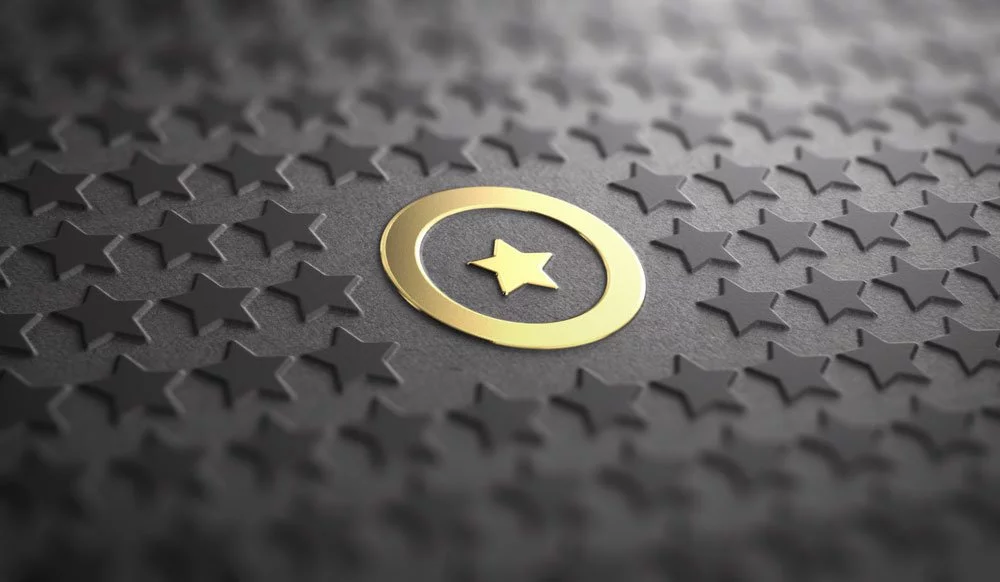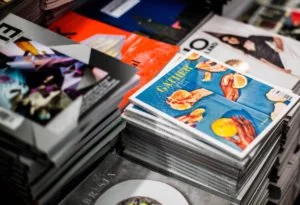Do you love the look of embossed printing? Ever wondered how they achieve the intricate results? If you’ve ever been given embossed brochures or stationery, you know how luxurious and beautiful they look.
Apart from making images stand out, embossed printing is a technique that adds elegance and visual appeal to any paper or surface. For those who aren’t exactly sure what embossing is, here’s a guide that will help you understand what it is and the types still used today.
What is embossed printing?
In the printing industry, embossing is the creation of design, decoration, or pattern impressions on paper. It refers to the method of pressing images into card stock or paper to create three dimensional designs.
In regular engraving or printing processes, unique plates are pressed against the surface area of selected materials to create imprints. Embossing, however, leaves imprints, raises the surface area, and adds additional dimension to the paper. This makes sense, as the meaning of embossed is synonymous to “raised.”
What is the advantage of embossed printing to regular printing?
Embossed printing is a process that provides more elegance to the material which has been embossed. Most times, it creates a new standard of product quality that exceeds other printing methods. For instance, a regular piece of paper looks more professional when an embossed seal is added. Similarly, an embossed logo printing on a business card makes the brand appear more high-end and sophisticated.
Embossed printing, in simple terms, makes ordinary prints more professional and beautiful than they originally were. Even the simplest of paper materials can stand out with embossed printing. However, it’s important to know that the final appearance of an embossed material depends on the quality of the embossing and the paper used. When paper is poorly embossed, it can affect the final appearance of the material.
Embossing process
The embossing process is done by pressing a sheet of paper (or other forms of substrate) into a female die that has a design etched or engraved into it. This is usually accomplished with a male counterpart on the bottom of the paper, so that the material is pressed between both dies, and the design is transferred to the paper.
Although embossing appears to be quite visually deep, it is typically no more than 15 microns, and 25 microns at most. That means an average emboss is about 1/64th of an inch.
Different papers can create various embossed effects. For instance, in embossed logo printing, the emboss you do on a piece of cardboard will look different compared to embossing on a thick type of stationer paper. Different embossing types also create different effects.
Let’s take a look at the numerous types of embossing.
Types of embossed printing
As embossing is a special procedure that involves pushing paper forward with the use of embossing die to create raised logos, texts or images, there are various ways which can be achieved.
Blind embossing
This is a technique wherein the material isn’t stamped over a printed image or over with foil. The color is the same color as the surface area. It can also be called self-embossing or same color embossing.
Sculptured embossing
Sculptured embossing is a hand-tooled process where the embossed material is made from a photograph or drawing with differing depth levels to make the image more realistic and multi-dimensional.
Registered embossing
Registered embossed printing refers to a technique where an image that’s embossed registers exactly to a printed image or a foil stamp. Through the embossing process, the printed image is given a raised look.
Printed embossing
In printed embossing, the embossed area registers with image that’s printed. The bevel can either go outside or inside the printed image, depending on the customer’s requirements and specifications.
Single level embossing
In single level embossing, the image area is raised up to a single flat level.
Multilevel embossing
Multilevel embossing is a technique where the image is raised to several levels with varying height depths. This provides the embossed image with additional texture and relief, making it more visually interesting.
Tint embossing
Tint embossing is a new innovation where pearl or pastel is utilized during the embossing process. This method is used similar to other types of embossing, and the technique is currently popular and in demand. As pearl and pastel foils are transparent, tinted embossing is best used on white stock.
Combo embossing
This is the technique where an embossed image is stamped with foil.
Glazing
Glazing refers to the process of a polished embossing. This is an especially popular technique and trend on darker colored stock. When pressing the die, the heat and pressure are substantially increased. The pressure helps to add shine and when a high temperature is used, papers with lighter colors can be burned in order to change the paper’s color. If done correctly, it allows for beautiful design contrasts.
Uses of embossed printing

As embossed printing is relatively inexpensive, it has a wide variety of uses. The embossing process is used for functional uses and aesthetic purposes in many industries. You can find embossing on wedding cards, credit cards, and a huge selection of stationery options. Other industries also use embossed printing on the packaging of their products to help improve their products’ appeal to potential customers.
The top industries that commonly use embossed printing for their products include:
- Music industry – A lot of artists in the music industry use embossing for their album covers. The embossed printing helps the artist appear more established in the industry, even if they’re just debuting.
- Cosmetic industry – The cosmetic industry typically uses the embossing process for their product packaging. This is because embossing creates a sophisticated and luxurious look that’s more appealing to buyers, even if the product isn’t as high-end as it looks.
- Technology industry – Some companies that sell mobile phone accessories use embossed printing to create a more visually attractive look and feel. Most of the major cell phone covers around the world, like Samsung and Apple, feature embossed logo printing.
What is debossed printing?
While embossed printing refers to a raised surface, embossing is also commonly done to create a depressed surface design. In the printing industry, this is commonly referred to as debossing.
In debossed printing, the image, text, or logo is imprinted into the paper to create a depressed effect. Basically, the meaning of debossed is creating an indentation in the stock used. The metal die is stamped on to the front of the card stock or paper to create the depressed focus area.
Embossed printing vs. debossed printing
The key difference between embossed and debossed printing is that the other one is a raised design and the latter is an indented one. Debossing also doesn’t interfere with your stock’s other side, providing you with both sides to work with. This isn’t the same case with embossing.
Embossed and debossed printing also have their own set of advantages. If you were creating leaflets, business cards, or brochures made from card or paper, then embossing is the better course of action. With embossing, you can create designs that leap from the page, drawing the attention of customers to vital information.
It’s also easier to apply foil prints to areas that are embossed as the foil can transfer easily to the other sections without affecting the rest of the design. Although it’s not impossible to achieve a clean transfer with debossed designs, it’s easier to do with embossed printing.
What about debossing?
Debossed printing is usually better when working with other materials, like leather and books. The in-depth and three-dimensional designs of debossing are more understated, making them more appropriate for minimalist aesthetics.
As debossed designs sit lower than the surrounding area, they’re not subject to the same wear and tear of embossed prints. This ensures that the debossed designs are permanent and will always keep their shape.
How to improve your printing projects with debossed and embossed printing
Regardless of the type of debossing or embossed printing you choose, both techniques can help your print projects stand out in various ways. Here’s how you can utilize both so your prints come out amazing:
Focus attention on important information
When using debossing or embossing, draw the eyes of your audience to the most vital information on your products. These can be anything from your contact details to your brand’s motto.
Highlight your logos
Both techniques will help your brand stand out on prints such as business cards, letterheads, envelopes, and stationery. They help add that professional touch.
Boost visual interest by adding texture
In print marketing, the power of touch should never be underestimated. Whether it’s debossed or embossed printing, they both add interesting textures that feel good in the readers’ hands and create a captivating effect. It’s simply something that they don’t see or feel with other print materials.
Embossed printing is an excellent method for creating beautifully crafted prints and designs that are suitable for various applications. From business cards and wedding stationery to books and brochures, they convey an unwritten message of quality and aesthetics. They help turn ordinary stock into detailed pieces of art.



